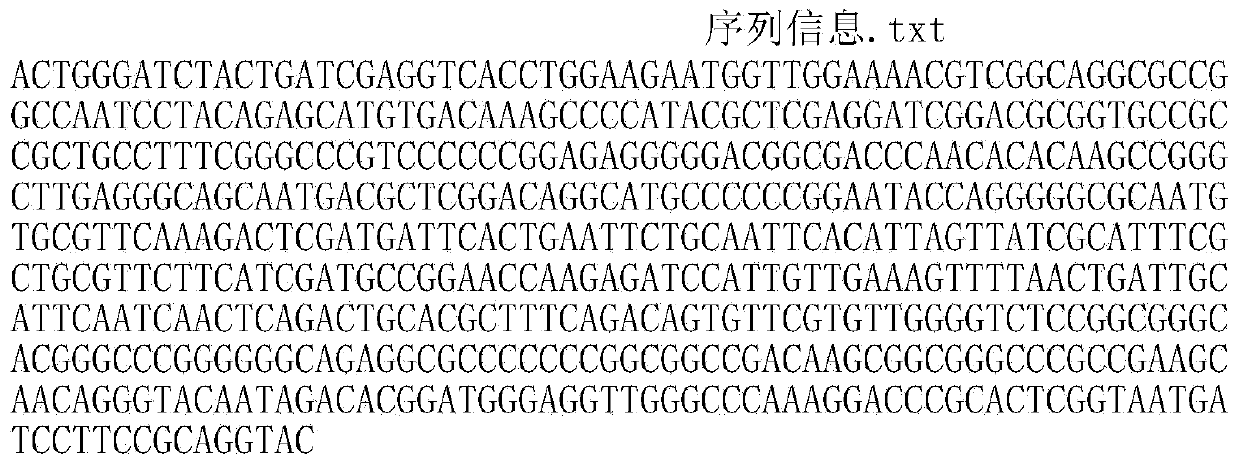Aspergillus niger NY-1 as well as improvement technique for improving insecticidal activity of aspergillus niger NY-1 and application of aspergillus niger NY-1
A technology of NY-1 and Aspergillus niger, applied in the field of chemical epigenetic modification, can solve the problems of delay, difference of metabolic pathways of endophytes, stop of secondary metabolism, etc., and achieve the effect of obvious effect and low cost.
- Summary
- Abstract
- Description
- Claims
- Application Information
AI Technical Summary
Problems solved by technology
Method used
Image
Examples
Embodiment 1
[0012] Example 1: Classification of Aspergillus niger (Aspergillus niger) NY-1 strain derived from coastal plants.
[0013] 1) Bacteria culture
[0014] According to the routine culture method of the microbiology laboratory, a small amount of Aspergillus niger (Aspergillus niger) NY-1 preserved in the glucose-agar medium was picked, inoculated on the surface of the PDA plate, and cultured at 25°C for 4 days. The initial colony was spreading and growing, and the whole was Black, with white mycelium, late spores are black, carpet-like, radial.
[0015] Preliminary identification of strains
[0016] According to the literature method (Journal of Northeast Agricultural University, 2007, 38, (1): 101-106), the ITS segment of 18S-28SrDNA was amplified by PCR, and the sequencing results were compared with the corresponding sequences of known strains in the Genebank database. The similarity of strain Aspergillus niger (Accession number: KF358715.1) was 100%. 序列信息如下:ACTGGGATCTACTGATC...
Embodiment 2
[0017] Example 2: Fermentation of Aspergillus niger NY-1 strain.
[0018] 1) Fermentation culture
[0019] Strain culture: First, according to the routine culture method of the microbiology laboratory, pick a small amount of Aspergillus niger NY-1 (Aspergillus niger) preserved in the glucose-agar medium, inoculate it on the surface of the PDA plate, and cultivate it at 25°C for 4 days as a large-scale fermentation The cultured strains are ready for use.
[0020] Next, cut 4cm from the seed plate 2 Aspergillus niger NY-1 (Aspergillus niger) strains of different sizes were put into sterilized 2000mL Erlenmeyer flasks filled with liquid culture medium, left to stand at room temperature for 22 days, and then sterilized with ethyl acetate for later use.
[0021] The liquid medium is potato 60g / bottle, glucose 6g / bottle, yeast extract 0.9g / bottle, peptone 1.5g / bottle, 5-azacytidine 2.44μg / bottle, distilled water 300mL / bottle.
[0022] 2) Separation and purification of fermentatio...
Embodiment 3
[0024] Example 3: Insecticidal activity test.
[0025] Artemia (brine shrimp), also known as Saltwater Artemia, belongs to Arthropoda, Crustacea, Anocaria, Saltwater Artemia, and Artemia in taxonomy. Xiao Yongtang from Xiamen University used Artemia as the object of toxicology experiments, and studied the anti-insect activity of a total of 188 marine fungal metabolites collected from mangroves in Zhejiang and Fujian Provinces (Journal of Xiamen University, 2005, 44(6): 847- 850); Liu Yong et al. (Acta Ecotoxicology, 2011, 6(5):557-560) determined the safety and ecotoxicological evaluation of 7 pyrethrins on the non-target organism Artemia. Therefore, the experimental method for the acute toxicity of Artemia as a poison is simple, easy to operate, fast and highly feasible. (Plant Medica, 1991, 45:31-34; Pesticides, 2011, 50(4):261-262, 275).
[0026] 1) Hatching of Artemia
[0027] Take a spoonful of about 200mg of Artemia eggs and place them in 500ml of aged seawater for ve...
PUM
 Login to View More
Login to View More Abstract
Description
Claims
Application Information
 Login to View More
Login to View More - R&D
- Intellectual Property
- Life Sciences
- Materials
- Tech Scout
- Unparalleled Data Quality
- Higher Quality Content
- 60% Fewer Hallucinations
Browse by: Latest US Patents, China's latest patents, Technical Efficacy Thesaurus, Application Domain, Technology Topic, Popular Technical Reports.
© 2025 PatSnap. All rights reserved.Legal|Privacy policy|Modern Slavery Act Transparency Statement|Sitemap|About US| Contact US: help@patsnap.com

